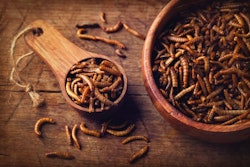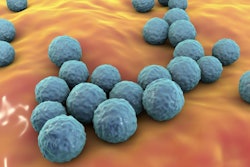
ORIGINALLY PUBLISHED AUG. 29, 2017
In an experiment, dogs fed either extruded, raw or lightly cooked dog foods ended up with different species of bacteria and other organisms in their feces. Those results give clues about how raw types of diets influence dog health, digestion and the community of organisms, called microbiota, in dogs’ intestines.
“Not surprisingly, given how the chemical composition, level of processing, and nutrient digestibility among diets differed, the extruded diet was quite different than the mildly cooked and raw diets,” study co-author Kelly Swanson, professor of animal and nutritional sciences at the University of Illinois, told Petfood Industry. The Journal of Animal Science published the results.
However, differences in microbiota did not seem to influence dog health. Throughout the replications of the 28-day experiment, eight dogs dined on one of four commercially available dog foods:
- Freshpet Vital Balanced Complete Nutrition – lightly cooked
- Freshpet Roasted Meals – lightly cooked
- Freshpet Vital Raw - raw
- Purina Dog Chow - extruded
All of the animals remained healthy regardless of which dog food brand or type they ate. Fecal metabolites (leftovers from the dogs’ digestion and energy production) were similar across the three diets. Swanson said animal nutritionists still need more long-term studies to look for any health differences among extruded, lightly cooked and raw dog foods.
Dog food’s relationship to gut microbes
“There are many factors that affect the gut microbiota, including genetics, age, health status and environmental exposures, of which diet is an important component,” Swanson explained.
Dog food strongly affects the intestinal community of microorganisms, he said. Factors like the ratio among fiber, resistant starch and protein influence the quantity and type of organisms in the microbiota.
“The quality and chemical composition of the ingredients and nutrient digestibility are key factors,” he said. “That is an important factor in our study because the ingredient list, chemical composition (nutrient profile), and nutrient digestibility was quite different among diets. The mildly cooked and raw diets were generally higher in protein and/or fat and were more digestible than the extruded diet.”
Extruded, raw and lightly cooked dog foods experimental results
The lightly cooked and raw diets both caused changes in the dog’s microbiota analogous to those seen in people eating high-fat, high-protein human diets.
“Looking more specifically at the individual bacterial groups, the mildly cooked and raw diets tended to increase fecal Bacteroides and Fusobacterium and reduce fecal Bifidobacterium, all changes known to occur with Western-type diets,” explained Swanson.
However, despite having a higher fat content than extruded dog food, both lightly cooked and raw diets seemed to reduce blood triglyceride concentration, which would be considered beneficial long term. The biological reason for this is unknown.
Dogs fed the extruded diets had the highest diversity of microbe species in their feces. Extruded dog foods also tended to differ in the collective presence and abundance of all bacteria across experimental variations.
“In addition, dogs eating the raw diet had greater fecal Lactobacillus and Pediococcus and reduced fecal Blautia and Clostridium,” he said.
That finding likely resulted from the acidity of the raw diet. Both Lactobacillus and Pediococcus species were acid-tolerant strains. That acidity of raw diets helps limit pathogen growth in the dog foods, Swanson noted.
"The raw diet tested in our study is unique in its acidity (low pH)," he said. "During its preparation, it undergoes an incubation with Pediococcus acidilacticii, a lactic acid producing bacteria used in human foods (and this pet food). The acidity kills potential pathogens. Therefore, it can be safe from a pathogen perspective without undergoing high pressure pasteurization (HPP) like many of the raw diets on the market.
"In regards to fecal microbiota, the increase in Pediococcus and Lactobacillus observed in dogs fed raw diets in our study is probably unique to this particular raw diet because of the acidity of the food and because the food is a source of Pediococcus (so it may act like a probiotic in that sense)."
Raw versus cooked pet food and dog biology
Since all three types of dog food didn’t seem to result in health problems, one takeaway from this research may be that extruded, lightly cooked and raw dog foods can all meet dogs’ nutritional needs if made using evidence-based guidelines and safety protocols.
“While some may suggest that one type of diet is the only way to go, dogs are living longer than they ever have before,” he said. “This shows how much the scientific community, veterinary medicine, and the pet food industry has advanced over the past few decades.”
“Whether the ancestors of domestic dogs were consuming animal carcasses, feeding off humans’ scraps, or consuming plant matter, we need to prioritize and use our current scientific knowledge to feed our pets of today.”














